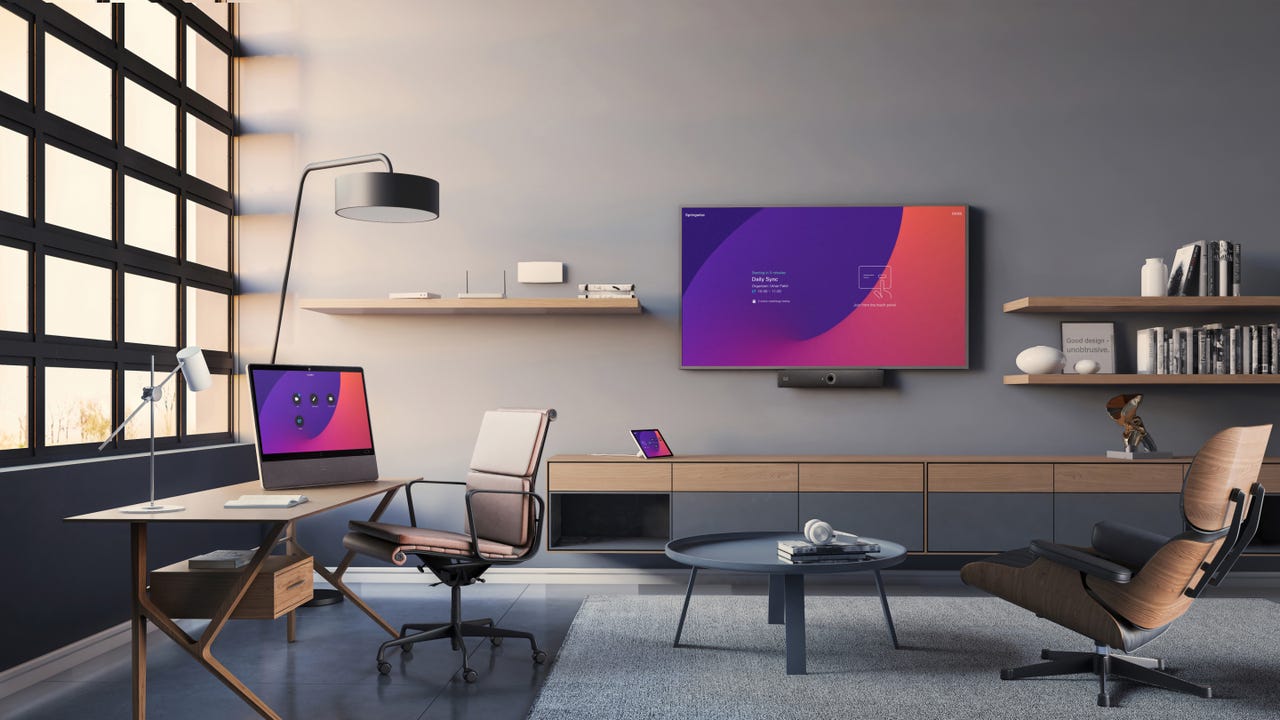Cisco Live: Hybrid work is broken and Webex has a plan to fix it


With some companies requiring workers to return to the office and other companies moving to a remote-first approach, it's clear a hybrid working environment is the future.
What is hybrid work? It's a mixture of remote and in-office workers coexisting. According to Jeetu Patel, executive vice president and general manager of security and collaboration at Cisco, the company's own research predicts that 98% of meetings will have at least one participant who joins remotely.
There are inherent problems with the hybrid approach, especially for those who aren't in the office. As someone who has worked remotely for the last 12 years or so, it dawned on me that I've experienced all of the hybrid issues Patel and Cisco's web conferencing company Webex are aiming to fix.
"[All] of us worked in the office, or when everyone started working at home, those were much easier transitions to make than hybrid work," Patel told ZDNet ahead of his keynote speech about the problem with hybrid working during Cisco Live on Wednesday.
According to Patel, hybrid workers face three main types of problems. By remotely joining a meeting, it can be easy to feel left out of important aspects of an in-person meeting, such as not being able to see notes and sketches on a whiteboard. Then there's the aspect of not being able to pick up on non-verbal cues that we all give while listening to someone talk, such as nodding your head to let others know you're listening and understand.
But with a camera at one end of a large conference room, it can be hard to pick up on those gestures and cues over a video conference.
Technical issues, such as poor audio quality and an internet connection that keeps dropping in and out, can make hybrid working even more frustrating.
What is Cisco doing to solve these problems? Through a series of hardware and software solutions, Patel walked me through the company's approach. For example, a new camera technology that's currently in beta called People Focus can identify faces, showing remote participants a close-up view of a person in a bid to help them pick up on visual cues.
There's also Webex Board, a physical whiteboard that integrates with Webex, allowing both in-person and remote attendees to see the whiteboard and interact with it.
Webex can enhance your audio by removing background noise; identifying a speaker's voice; silencing nearby conversations; and getting rid of echoes. As for dropped internet connection, Cisco's Meraki routers have backup cellular connectivity built-in, making it easy to switch over to an LTE connection should your internet service provider have an outage.
Near the end of our call, Patel talked about lessons learned from the pandemic forcing companies to go fully remote. "Wouldn't it be sad if after the pandemic is over, we all said, 'Let's revert back and go 100% to the office?' The beauty about what we learned in the past couple of years is that talent is available anywhere, globally. And they should be able to participate in the global economy."
Patel continued, "We've made a lot of progress over the last couple of years, and we should take that forward."
I agree. Some form of hybrid work is the future, or at least it should be. Hopefully with companies like Cisco and its products, the conversation shifts from "Should we return to the office?" to "How can we make it work for those who want to return and those who would prefer to stay remote?"